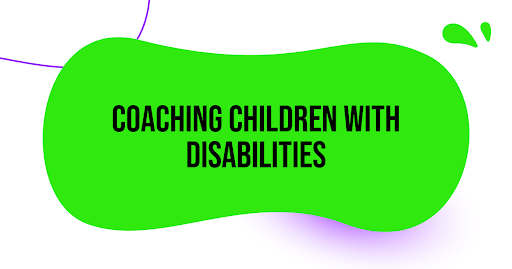
March is Developmental Disabilities Awareness Month. This month is dedicated to encouraging and providing opportunities for people with disabilities to achieve their full potential and creates awareness of the different barriers that people with developmental disabilities often face when trying to connect with their community.
Sports are a highlight in many people’s lives, and finding ways to make sports inclusive for people with disabilities helps to give them a sense of accomplishment and fulfillment. The popularity of sports and the impact it has on physical, social and mental development are part of what makes them ideal for people with disabilities.
Team sports have the ability to transcend linguistic, cultural and social barriers, which makes them an ideal platform for the inclusion of all people.
For coaches out there who are looking to help coach children with disabilities, there are a few things you should take note of before starting.
Safety first
Safety is a key part of coaching athletes with disabilities. We want to make sure everyone avoids getting injuries, so there needs to be a plan in place in order to play without risk. If you have a child on the team with a certain developmental disability, ask the guardians for background on some of the following:
- What are the child’s specific needs, and what are some things our team can do to better accommodate their needs?
- Do they need special safety equipment such as soft helmets?
- Have they taken safety classes before the season begins?
When the season begins, having these answers will help you be prepared and know how to adjust to the player’s needs safety-wise. That way, if there’s any sort of emergency, you know what to do and what steps to take.
You have to be adaptable
No two children on a team are the same, and when it comes to working with individuals with special needs, you can’t take the same approach for everyone either. As a coach, it’s imperative that you’re aware of this and you have the ability to adjust and respond to each individual’s needs. Keep in mind why you’re doing this: because every child deserves the right to participate in team sports. So, here are some examples of what adaptability looks like:
- Don’t come in with any preconceived plan other than letting them have fun
- Don’t put pressure on the team to perform in any way
- Offer every player a chance to play
Remember why you’re doing this
Not only will providing the right safety measurements and resources help children with disabilities, but it will create an inclusive environment. You want everyone to feel like a part of the team, and be able to participate and have a great and fun sports season!



